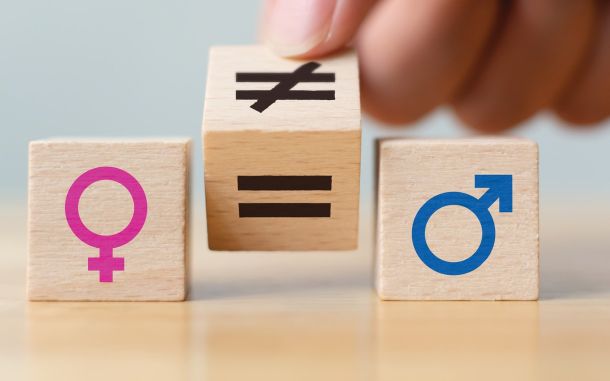Billions of Beats

In This Article
-
Our heart beats more than the number of seconds we live. How many times is that in 80 years? Ten million? One hundred million? Maybe a billion? The correct answer is closer to three billion (3,000,000,000) beats.
-
Every room, every wall, and every door are masterfully placed in our heart to form the perfect pump.
-
Much like any other pump, our heart is electrically powered. Luckily though, it doesn’t need to be plugged into an outlet. Our heart generates its own electricity at the sinoatrial (SA) node, which is located at the very top of the heart.
Humans can live relatively long lives; some people can even live a century, or more! A lot goes on in our bodies to keep us alive. But nothing is as tireless as our heart. Starting soon after the first month in our mother’s bellies up until our last seconds on this earth, our heart quietly ticks away. Our heart beats more than the number of seconds we live. How many times is that in 80 years? Ten million? One hundred million? Maybe a billion? The correct answer is closer to three billion (3,000,000,000) beats. These beats may look straightforward at first glance; however, the heart has a lot of precise mechanisms that occur during each and every beat. You would be surprised at how the tiniest of malfunctions can lead to severe consequences. Things can go very wrong in many different ways. But for most of us, they don’t! Keep reading, and I believe you will better appreciate your heart’s architecture and engineering, and marvel at the fact that it keeps beating for as long as it does.
Let us begin with the basics: what does our heart look like and how does it pump? The heart has four rooms inside of it, two on the top called the atria and two on the bottom called the ventricles. The atria take in the blood coming into the heart and empty it into the ventricles, which then pump blood out. The left and right sides of the heart are completely separated from each other. The right side receives blood from the body and pumps it to the lungs. The left side receives blood from the lungs and pumps it to the entire body. There are also valves found at the exits of each of the four rooms. The main function of these valves is to only allow blood to pass in one direction. This is important for many reasons. The heart is a very reactive organ in terms of remodeling. In other words, it changes its structure to compensate for changes in pressure or volume. A backward leak of blood would cause an increase in pressure and volume in the previous compartment. Over time, this leads to that compartment getting larger or thicker. In the short-term, these changes are crucial to preserve its function. However, in the long-term, this leads to lower efficiency of its pumping function, which can ultimately lead to heart failure. Every room, every wall, and every door are masterfully placed in our heart to form the perfect pump.
After learning about our heart’s intricate architecture, let’s look at how this fantastic pump works. Much like any other pump, our heart is electrically powered. Luckily though, it doesn’t need to be plugged into an outlet. Our heart generates its own electricity at the sinoatrial (SA) node, which is located at the very top of the heart. This node serves as both the generator and the pacemaker of our heart. It is what initiates a heartbeat. The electrical pulse it generates travels down through our heart and causes it to quickly contract. However, electricity is very fast. The electric pulse can reach every cell in the heart faster than a blink of an eye. This lightning-fast pulse would cause the entire heart to contract in one large beat. But as we all know, the heartbeat consists of two parts. This two-part beat is essential for the heart to pump blood. This is where heart’s second node, the atrioventricular (AV) node, comes into play. This node serves as a braking system that slows down the electricity passing from the atrial (top) circuit to the ventricular (bottom) circuit. “How long is this delay?”, you may ask. Well, just about one tenth of a second! This tiny delay is the reason we hear the heartbeat as two distinct sounds. It allows for the atria to pump all of its blood into the ventricles (the first sound) before the ventricles pump it into the body (the second sound). Otherwise, the ventricles would pump while half-empty, leaving the body to starve! As the saying goes: “Speed kills”!
Now we have a better understanding of the architecture and electrical engineering of the heart. So, how do doctors tell a healthy heart from an unhealthy one? Just like building inspectors, a doctor has specialized tools at their disposal to check the heart’s infrastructure. The three most popular tools are a good old-fashioned stethoscope, an electrocardiogram, and an echocardiogram.
Stethoscope
One of the hallmarks of the medical profession, the stethoscope has remained relevant even among modern-day medicine’s fancy gadgets. As you all know, it allows doctors to directly listen to the heart. The most common abnormalities that can be found with a good listen are arrhythmias and dysfunctional valves. An arrhythmia is when the heart doesn’t follow a regular rhythm. This usually occurs when there is an issue in the heart’s electrical circuit. In most cases, this can easily be heard directly through a stethoscope. Similarly, dysfunctional valves tend to cause more noise than usual, which are called “murmurs.” An abnormal valve may lead to a “click” when opening or a “whoosh” when blood passes through it.
Electrocardiogram
We previously talked about how electricity is a big part of the heart’s functions. Doctors can diagnose many heart problems just by looking at an electrocardiogram (ECG), which provides a window into the movement of electricity through the heart. Each bump and spike seen on an ECG strip represents the compartments of the heart contracting or relaxing. By looking at an ECG, doctors can tell if electricity is being conducted normally, and if the heart is pumping as it should. The most common problems that can be diagnosed using an ECG include heart attacks, arrhythmias, and other deadly rhythms that require an external electric shock (known as defibrillation).
Echocardiogram
So, we can hear the heart and monitor its electrical activity, but can we see it in action? Absolutely! An echocardiogram shows the heart pumping in real-time. It is great for a comprehensive assessment of the heart and can help identify issues that cannot be identified by a stethoscope or ECG. This “video” of the heart allows doctors to see exactly how strong each part of the heart is pumping, how much blood it’s pumping, and whether there are any problems with the valves. It is great at diagnosing heart failure, which is when the heart pumps out less than a certain percentage of the blood it receives.
Finally, let’s talk about the infamous heart attack, the silent killer of millions every year. The heart is a generous organ: it delivers blood to every corner of the body. However, it also needs some of this life-giving blood! For this reason, it is fed by three large vessels that hug the heart that supply it with the blood it needs to keep pumping. A heart attack (or myocardial infarction) occurs when one of these vessels gets occluded. Even though heart attacks are sudden, the disease process behind them usually take years to develop. The vessels feeding the heart slowly get narrower and narrower due to age, high blood cholesterol, or other various factors. Once one of them shuts off completely, that area of the heart stops. Since the heart is so active, a halt in the delivery of blood is extremely dangerous. Every minute counts! That is why patients are rushed to the hospital to have their vessels opened with medications and procedures. Once it’s too late, the muscles in that area of the heart die and the heart becomes permanently scarred. Luckily, the other two vessels are enough to keep the heart going! The heart, being as tireless as it is, will keep beating!
Now we are at the end of this article. While you read this, your heart ticked away a couple hundred more times. It delivered the energy your eyes and brain needed to see and understand this article. It’s deep in your chest and it always has your back. Take a minute to reflect on it, appreciate the work it does, and never forget to count it among your blessings!









